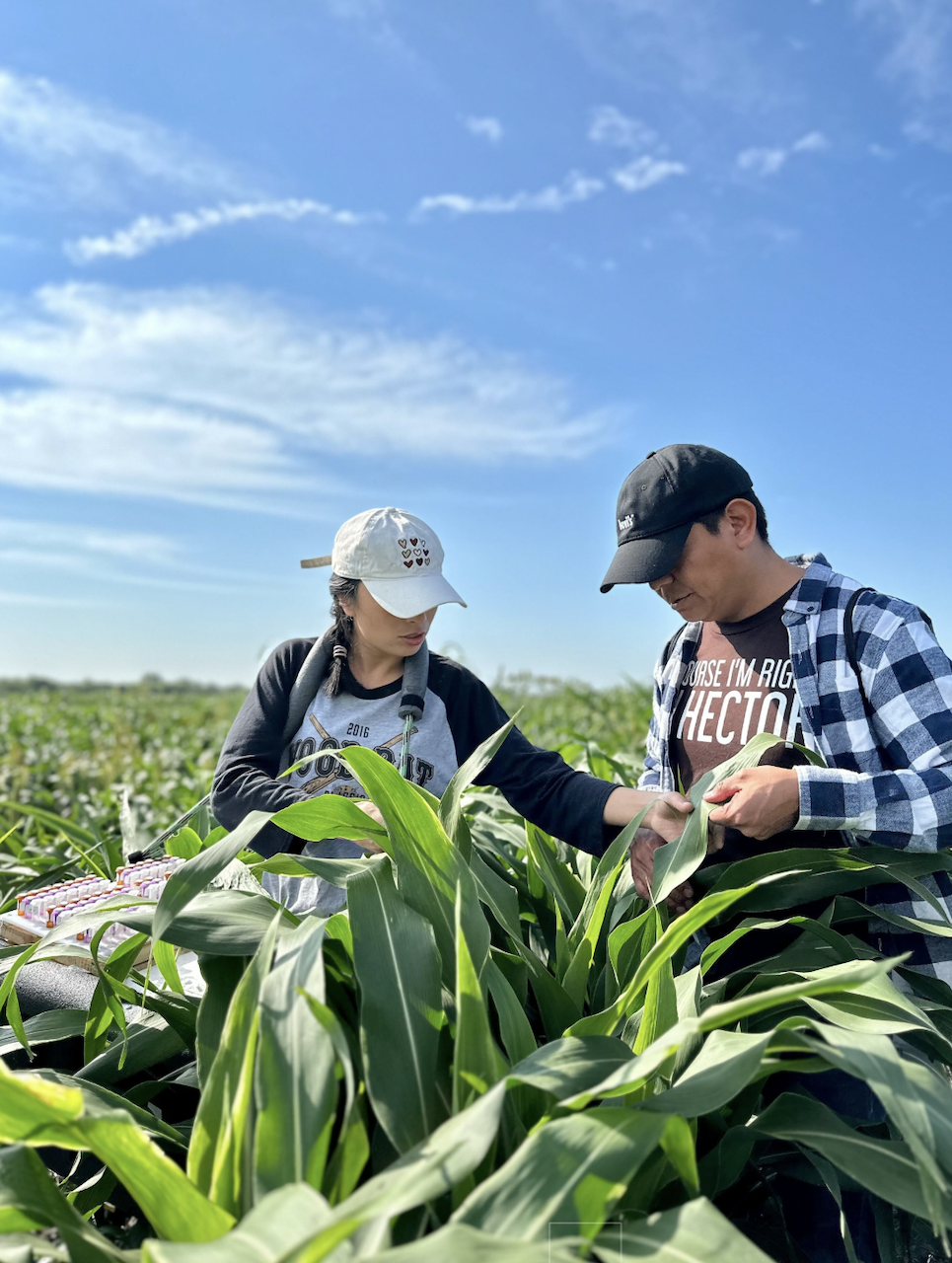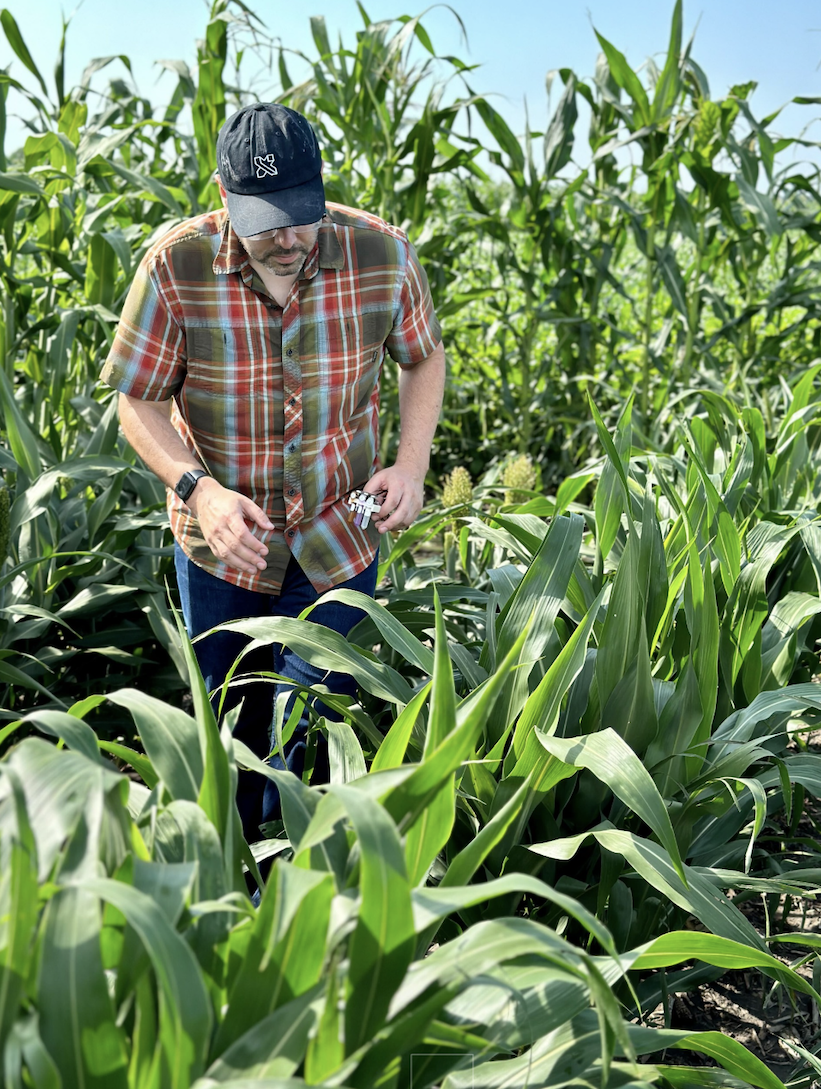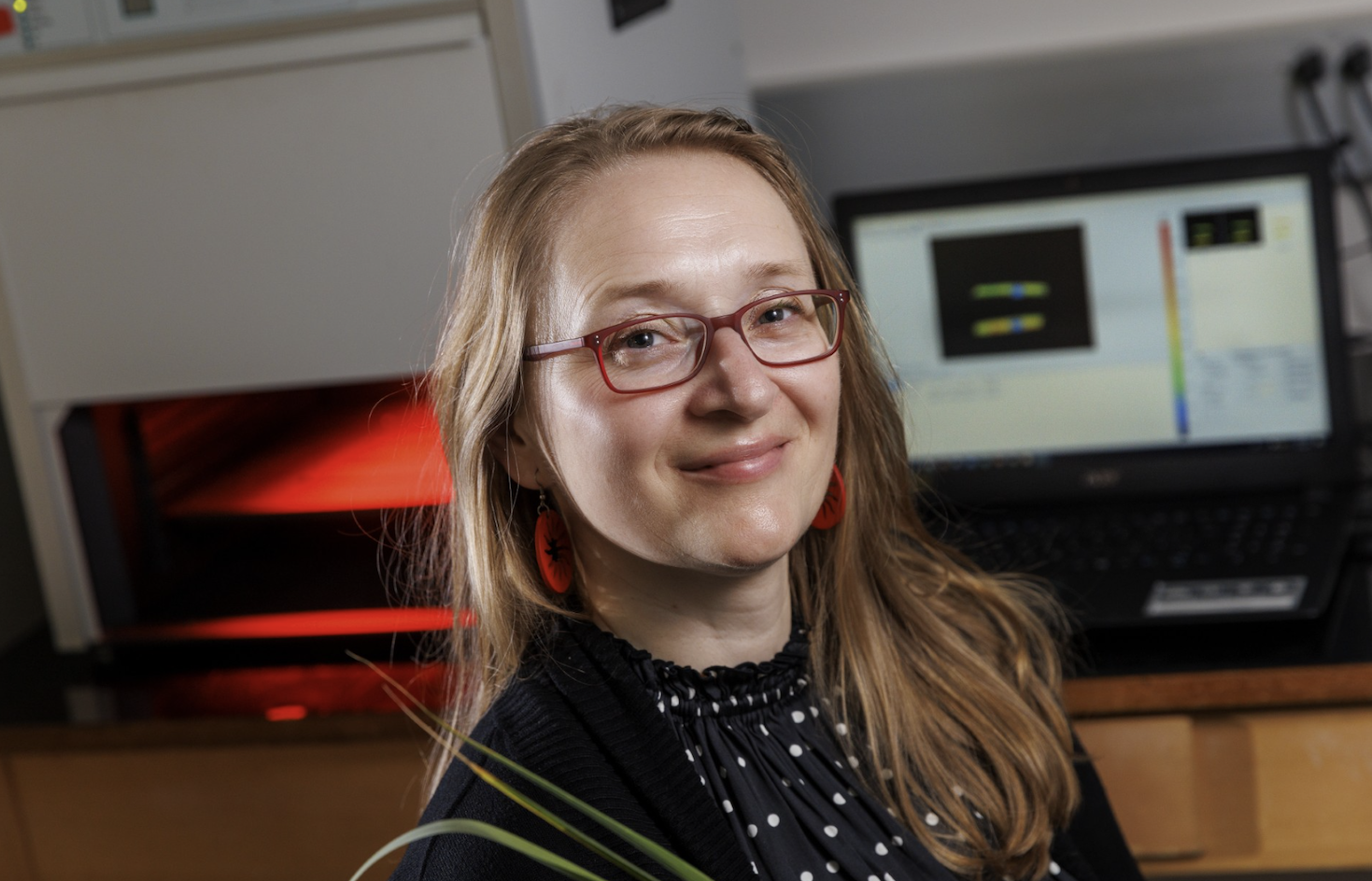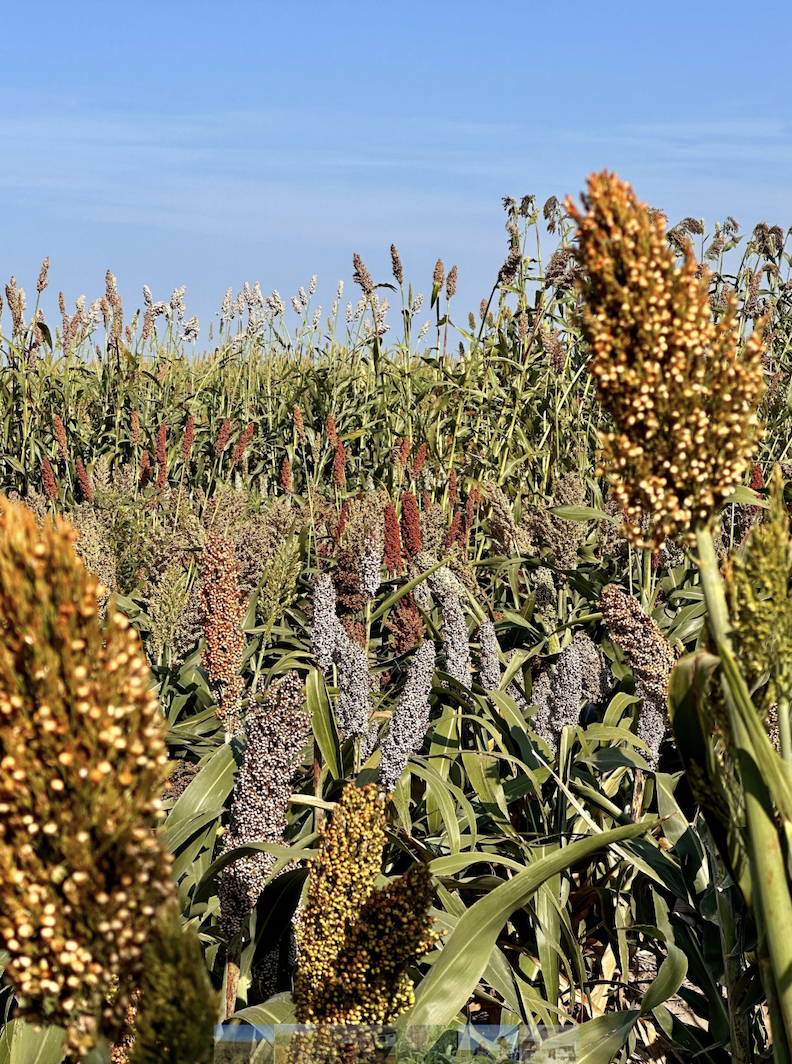Plants use non-photochemical quenching (NPQ) to protect themselves from light-induced damage by dissipating excess energy as heat, and genetic studies in crops like maize and sorghum have identified key genes regulating NPQ, offering potential for improving photosynthetic efficiency and yield.
Keywords: association mapping, comparative genomics, maize, nonphotochemical quenching, sorghum, NPQ, Comparative GWAS, Fluctuating light
One of the most exciting things about this research was creating the process for thinking of new genetic resources to improve photosynthesis and help plants protect themselves from too much light.This project required bringing together scientists from different disciplines, adopting new approaches to studying photoprotection from Katarzyna Glowacka and employing comparative GWAS from James Schnable and Nikee Shrestha. It was a great feeling when combining our efforts worked! This project has opened a door to more exciting fundamental discoveries in photosynthesis and photoprotection, and I hope we will be publishing more on that soon.
Being selected was very exciting for me and a tremendous honor for our work. – Sahay
Plants experience rapid fluctuations in light intensity under natural conditions due to factors such as cloud cover and wind, which can cause photodamage if not properly managed. To counteract disperse excessive light energy, plants have evolved mechanisms like non-photochemical quenching (NPQ). Genetic studies in various crops like rice, maize, and Arabidopsis have identified multiple loci that regulate NPQ kinetics, suggesting that different plant species share conserved genetic mechanisms to optimize light protection. However, the adaptation of NPQ kinetics to specific growing conditions in major crops remains an area of active research, with potential for improving photosynthetic efficiency and yield in agriculture.
Scientists from the University of Nebraska-Lincoln, Universidade de São Paulo, University of Warsaw and the Polish Academy of Sciences conducted a genome-wide association study (GWAS) in sorghum identified genetic variants affecting non-photochemical quenching (NPQ) kinetics under low-nitrogen conditions. The most prominent finding was the association with the sorghum ortholog of Suppressor Of Variegation 3 (SVR3), a gene previously linked to photosystem II regulation in Arabidopsis thaliana. Sorghum genotypes with a minor allele of the SNP linked to SVR3 exhibited more rapid NPQ induction and a slower relaxation of NPQ, potentially due to altered photosystem II function and increased energy dissipation. This could be linked to higher levels of NPQ-related pigments like xanthophylls, as similar effects have been seen in A. thaliana mutants with impaired chloroplast function. The significance of the SVR3-associated SNP was observed primarily under nitrogen-deficient conditions, suggesting that SVR3 plays a role in stress-induced photoprotection.
Another key gene associated with NPQ kinetics was the ortholog of the Non-yellowing 1 (NYE1) gene, which is involved in chlorophyll catabolism. Variation in NYE1 was linked to differences in chlorophyll content and a change in chlorophyll a to b ratio, especially under low-nitrogen conditions, leading to a need for increased photoprotection. This highlights the role of NYE1 in modulating NPQ kinetics in response to nitrogen stress, with genotypes carrying the NYE1 allele showing enhanced NPQ upregulation. These findings emphasize the importance of conserved genes like SVR3 and NYE1 in regulating NPQ kinetics across plant species, offering insights into how genetic variation can be used to improve photoprotection and stress tolerance in crops.
SorghumBase examples:
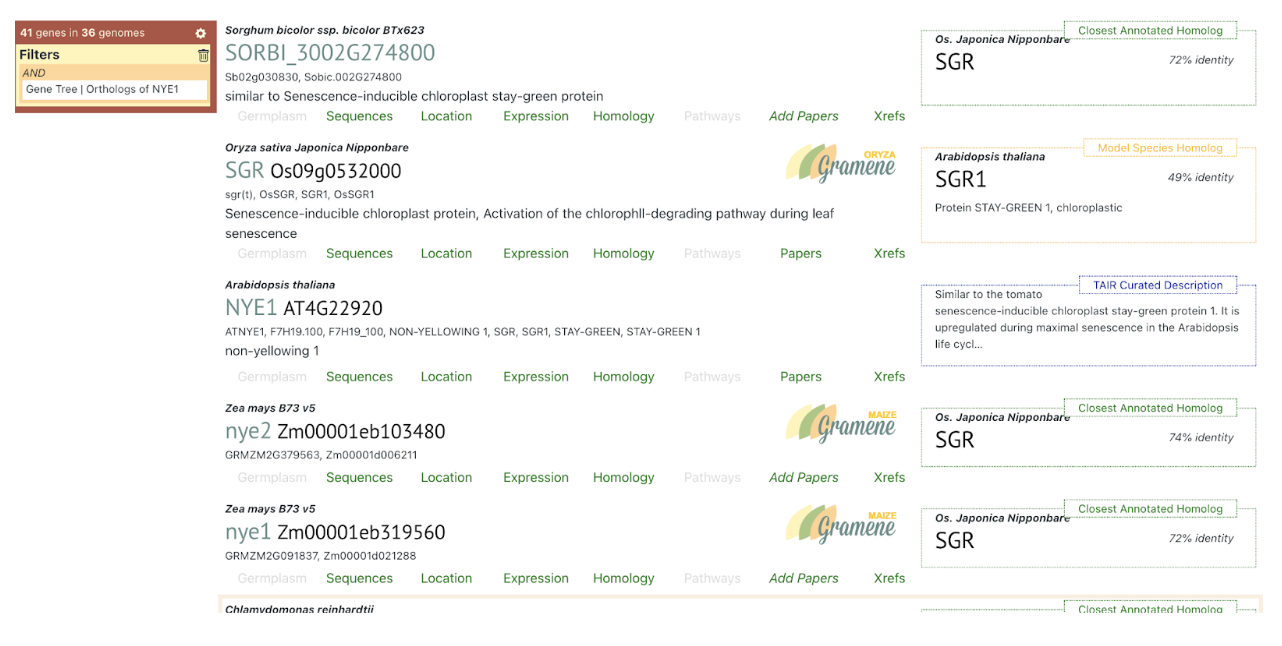
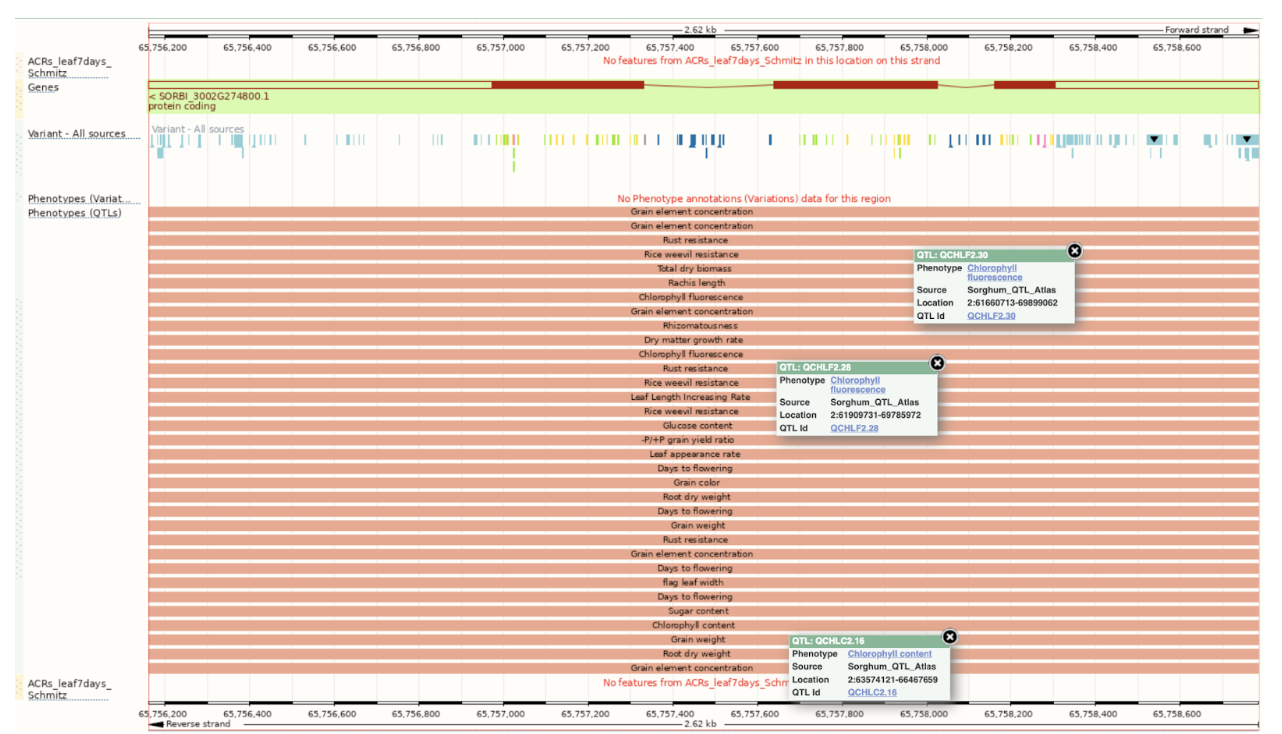
Reference:
Sahay S, Shrestha N, Dias HM, Mural RV, Grzybowski M, Schnable JC, Głowacka K. Nonphotochemical quenching kinetics GWAS in sorghum identifies genes that may play conserved roles in maize and Arabidopsis thaliana photoprotection. Plant J. 2024 Aug 10. PMID: 39126284. doi: 10.1111/tpj.16967. Read more
Related Project Websites:
- Sahay Lab at the University of Nebraska- Lincoln: https://cms.unl.edu/cas/biological-sciences/seema-sahay-lab/
- Glowacka Lab at the University of Nebraska- Lincoln: https://www.glowackalab.com/
- Schnable Lab at the University of Nebraska- Lincoln: https://schnablelab.org/
- Dr Glowacka’s page at the University of Nebraska- Lincoln: https://biochem.unl.edu/person/katarzyna-glowacka/
- Dr Schnable’s page at the University of Nebraska- Lincoln: https://agronomy.unl.edu/schnable/
